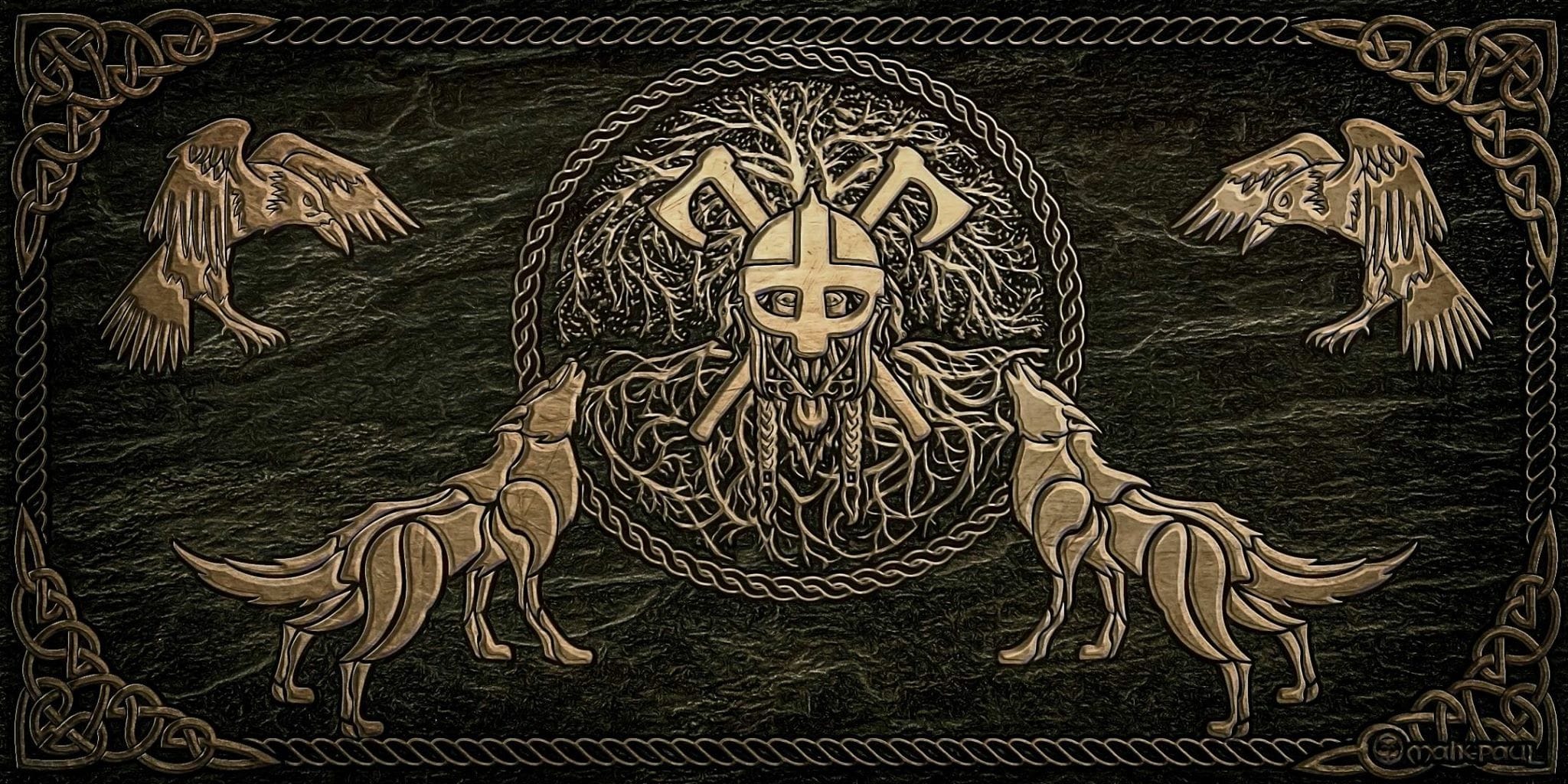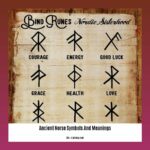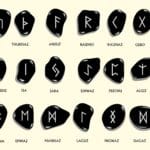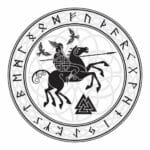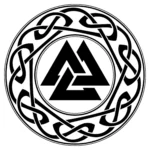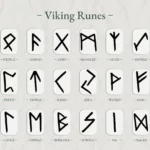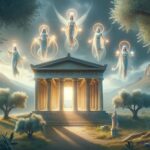Get ready for a mind-blowing trip into the hidden world of Norse mythology! We’re cracking open the code on the mind-boggling symbols that weave their way through this ancient tale. From the legendary hammer Mjölnir to the mysterious Gungnir, every object, rune, and creature has a secret meaning that’s waiting to be uncovered. Come with us as we step into the realm of gods, goddesses, and mystical beasts, and let’s decode the enigmatic emblems that have left people in awe for ages. By digging into these ancient symbols, we’ll not only learn about the past but also gain insights into ourselves and the wonders of human existence.
Norse Mythology Symbols: Unraveling the Tapestry of Myth and Legend
Imagine a world where legends dance upon the threads of time, leaving behind enigmatic symbols that whisper tales of gods, warriors, and the cosmos. Norse mythology, with its rich tapestry of beliefs and traditions, has left us with an intriguing array of symbols that offer glimpses into this captivating realm.
Yggdrasil: The Cosmic Tree
Picture an awe-inspiring tree that stretches from the depths of the underworld to the celestial heights. This is Yggdrasil, the Tree of Life. Its roots delve into the realm of darkness, while its branches reach upwards, connecting all the realms of existence. Yggdrasil represents the interconnectedness of everything, reminding us that our actions have far-reaching consequences.
Valknut: The Knot of Destiny
Intriguing triangles intertwined, often forming a singular triangle with three points. This is the Valknut, a symbol closely associated with Odin, the enigmatic god of wisdom and warfare. It embodies the eternal cycle of death, rebirth, and reincarnation, highlighting the transience of life and the inevitability of change.
Vegvisir: The Guiding Compass
Imagine navigating the treacherous frozen landscapes of the North. Vikings relied upon the Vegvisir, a symbol featuring eight spokes radiating from a central point. It was believed to guide travelers through treacherous paths, offering protection and a sense of direction in the face of uncertainty.
Aegishjalmr: The Helm of Awe
Envision a helmet adorned with an intricate pattern of eight interlocked triangles. This is the Aegishjalmr, a symbol invoked by Vikings to instill fear in their adversaries and bolster their own courage. It represents the indomitable spirit of the warrior and the power of protection.
Other Enigmatic Symbols
These symbols are merely a glimpse into the treasure trove of Norse mythology’s iconography. Let’s delve further into the tapestry and explore a few more fascinating emblems:
- Thor’s Hammer (Mjölnir): The mighty weapon of thunder, representing the raw power and strength of the legendary thunder god.
- Sleipnir’s Horse (Eight-legged): Odin’s loyal steed, symbolizing adaptability and mobility even in the face of adversity.
- Raven (Huginn and Muninn): These ravens served as Odin’s eyes and ears, carrying messages between the realms and representing wisdom and knowledge.
These symbols continue to captivate us, inviting us to explore the depths of Norse mythology and the rich cultural heritage that weaves through its tales. They stand as timeless reminders of the interconnectedness of life, the inevitability of change, and the enduring spirit of the human quest for knowledge and protection.
Learn more about all the Ancient Norse runes, their meanings, and the rich history behind their usage to get inspired by the wisdom of the Vikings. Check This Out
What’s the Significance of the Valknut Symbol and How Did Vikings Use It?
Picture this: You’re a Viking, standing at the edge of a fierce battle, your heart pounding with a mix of fear and exhilaration. As you raise your sword, your eyes catch a glimmering symbol on your amulet—the Valknut.
This intricate knot of three interlocking triangles isn’t just a random design; it’s a potent symbol that carries the essence of Viking culture and beliefs.
The Valknut: An Emblem of Courage and Honor
For the Vikings, the Valknut was more than just a symbol; it was a representation of their unwavering spirit and connection to their gods. It represented:
- Fallen Warriors: It honored those who bravely met their end in battle, ensuring their passage to Valhalla
- Courage and Strength: It embodied the fearless determination that drove Vikings into battle
- Odin’s Protection: It invoked the guiding hand of Odin, the god of war and death, paving the way to a glorious afterlife
How Vikings Used the Valknut
Vikings didn’t just admire the Valknut; they wore it as amulets, engraved it on runestones, and adorned their weapons with it. By carrying it close to their hearts, they believed the Valknut would:
- Protect them in battle
- Grant them courage and strength
- Honor the fallen
- Connect them to Odin and the afterlife
Beware of Misinterpretations
While the Valknut is deeply rooted in Viking culture, it’s important to note that some modern groups have unfortunately adopted it as a symbol of their own beliefs. However, the original meaning of the Valknut remains distinct and should not be confused with such ideologies.
The Valknut: A Reminder of Viking Heritage
Today, the Valknut continues to captivate people who appreciate the rich heritage and mythology of the Vikings. Whether you’re a history buff, an avid reader of Norse sagas, or simply drawn to the symbol’s intricate design, the Valknut serves as a timeless reminder of the courage and spirit that defined a legendary era.
How do you interpret the powerful Yggdrasil and what does it represent?
Imagine the grandest tree you’ve ever seen, its massive trunk stretching towards the heavens like a majestic skyscraper, its roots reaching deep into the earth’s core. That’s Yggdrasil, the cosmic tree from Norse mythology.
But Yggdrasil is no ordinary tree; it’s the universe itself. Its branches are the stars, its roots the underworld, and its trunk the axis connecting every realm. It’s a symbol of the interconnectedness of everything that exists.
Think of Yggdrasil as a cosmic conveyor belt, linking the world of gods (Asgard) to the world of humans (Midgard), and to the realm of the dead (Helheim). It’s like the tree of life, representing the cycle of birth, death, and rebirth. The tree’s eternally green leaves represent eternal life, while its roots deep in the underworld symbolize the connection between the living and the dead.
Yggdrasil’s Key Concepts:
- Yggdrasil embodies the structure and interconnectedness of the universe.
- It unites the living, the dead, the gods, and humankind.
- Yggdrasil’s cyclical nature symbolizes growth, decay, and renewal.
- Its roots in different realms represent the inseparable ties between all things.
Uncover the Mysteries of the Vegvisir
Prepare to voyage into the captivating world of the Vegvisir, an ancient Norse symbol that whispers secrets of guidance and protection.
Imagine an eight-pointed star, each spoke radiating like a beacon from a central point. Carved into these spokes are ancient runes, each carrying a unique message. This is the Vegvisir, a symbol that has captivated minds for centuries.
The Symbol and Its Powers
The Vegvisir is believed to have been a talisman for seafarers and warriors, offering supernatural guidance and protection during perilous journeys. Its eight spokes represent the cardinal directions, ensuring that travelers would never lose their way. The runes inscribed on the spokes harness the power of ancient wisdom, offering protection from storms, help in overcoming obstacles, and connection to the divine.
Runes and Their Significance
| Rune | Meaning |
|---|---|
| Hagalaz | Protection from storms and adversity |
| Nautiz | Overcoming challenges and obstacles |
| Isa | Stability and perseverance |
| Jera | Good fortune and prosperity |
| Eihwaz | Divine protection and guidance |
| Perthro | Secrets, hidden knowledge, and intuition |
| Algiz | Spiritual protection and connection to the divine |
| Sowilo | Victory and success |
The Vegvisir’s Enchanting Appeal
The Vegvisir has endured the test of time because it speaks to our innate desire for guidance and protection. It represents the unwavering spirit of those who dared to venture into the unknown, trusting in the symbol’s power to lead them home safely. Today, the Vegvisir continues to inspire those seeking spiritual direction, protection, and a sense of belonging in a world that can sometimes feel overwhelming.
Key Points to Remember:
- The Vegvisir is a Norse symbol that symbolizes guidance and protection.
- It features eight spokes radiating from a central point, each adorned with a rune.
- The runes on the Vegvisir represent a range of powerful attributes, including protection, perseverance, and victory.
- The Vegvisir was believed to provide supernatural navigation and protection to travelers.
Further Exploration:
Delve deeper into the mysteries of the Vegvisir with these resources:
Q1: What is the significance of Norse mythology symbols?
A1: Norse mythology symbols hold deep meanings and associations with the gods, goddesses, mythical creatures, and cosmic elements of the Norse universe. They were used for religious devotion, protection, and even intimidation.
Q2: What is the meaning behind the Valknut symbol?
A2: The Valknut, also known as Odin’s knot, represents death, reincarnation, and courage in Norse mythology. It is associated with the god Odin and his role in guiding fallen warriors to Valhalla.
Q3: What does the Yggdrasil symbol represent?
A3: Yggdrasil, the Tree of Life in Norse mythology, symbolizes the interconnectedness and cyclical nature of the universe. Its roots connect different realms, representing the unity and balance of all things.
Q4: What is the purpose of the Vegvisir symbol?
A4: The Vegvisir, or Viking compass, guides and protects travelers in Norse mythology. It is believed to have been used by Vikings for navigation and spiritual protection.
Q5: What is the origin of the Aegishjalmr symbol?
A5: The Aegishjalmr, known as the Helm of Awe, originates from Norse mythology. It is believed to protect the wearer from fear and enhance their courage. Its intricate design represents strength and protection.
- Unlock 6000+ words beginning with he: A comprehensive analysis - April 20, 2025
- Mastering -al Words: A Complete Guide - April 20, 2025
- Master Scrabble: High-Scoring BAR Words Now - April 20, 2025
